5.3: Vector Fields (Exercises)
- Last updated
- Jun 5, 2019
- Save as PDF
- Page ID
- 20255
( \newcommand{\kernel}{\mathrm{null}\,}\)
1. The domain of vector field
- Answer
- Vectors
For exercises 2 - 4, determine whether the statement is true or false.
2. Vector field
3. Vector field
- Answer
- False
4. Vector field
For exercises 5 - 13, describe each vector field by drawing some of its vectors.
5. [T]
- Answer
-
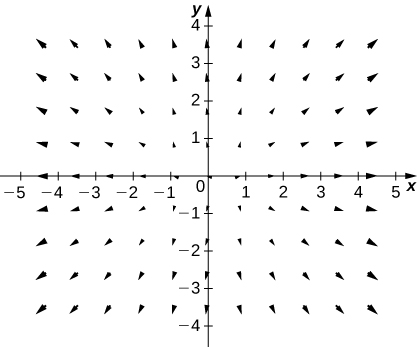
6. [T]
7. [T]
- Answer
-

8. [T]
9. [T]
- Answer
-
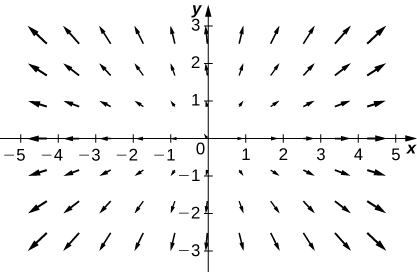
10. [T]
11. [T]
- Answer
-
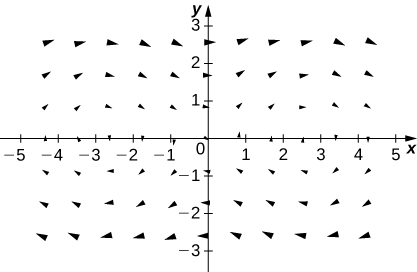
12. [T]
13. [T]
- Answer
-
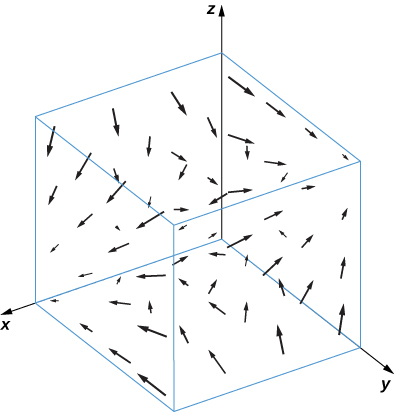
14. [T]
For exercises 15 - 20, find the gradient vector field of each function
15.
- Answer
16.
17.
- Answer
18.
19.
- Answer
20.
21. What is vector field
- Answer
For exercises 22 - 24, write formulas for the vector fields with the given properties.
22. All vectors are parallel to the
23. All vectors point toward the origin and have constant length.
- Answer
24. All vectors are of unit length and are perpendicular to the position vector at that point.
25. Give a formula
- Answer
26. Is vector field
27. Find a formula for vector field
- Answer
For exercises 28 - 29, assume that an electric field in the
28. Find the components of the electric field in the
29. Show that the electric field at a point in the
- Answer
A flow line (or streamline) of a vector field
For exercises 30 and 31, show that the given curve
30.
31.
- Answer
For exercises 32 - 34, let
32.
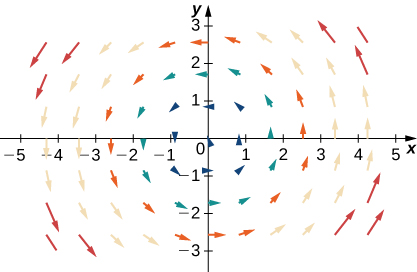
33.
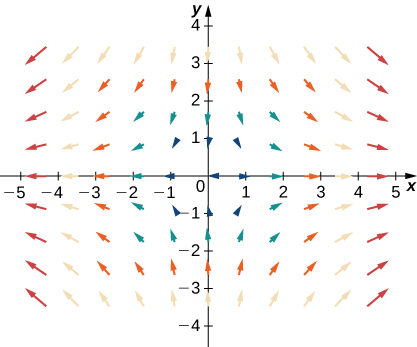
- Answer
34.
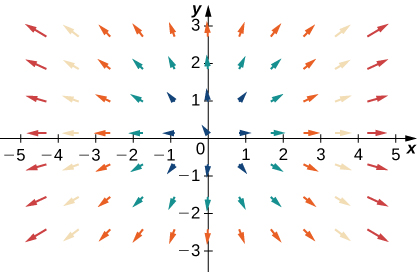
For exercises 35 - 38, let
35.
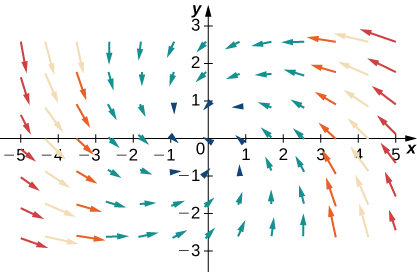
- Answer
- d.
36.
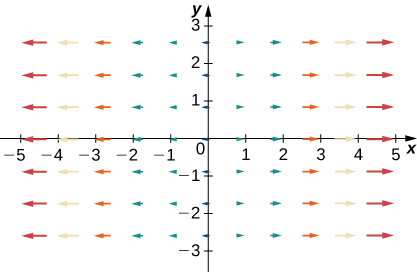
37.
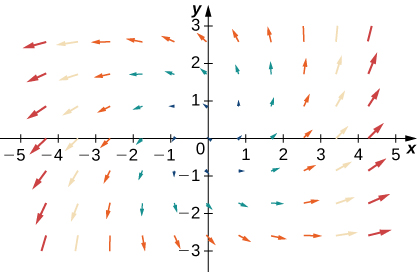
- Answer
- a.
38.
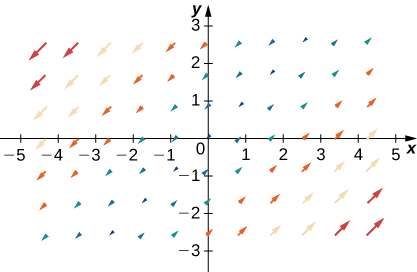
Contributors
Gilbert Strang (MIT) and Edwin “Jed” Herman (Harvey Mudd) with many contributing authors. This content by OpenStax is licensed with a CC-BY-SA-NC 4.0 license. Download for free at http://cnx.org.


